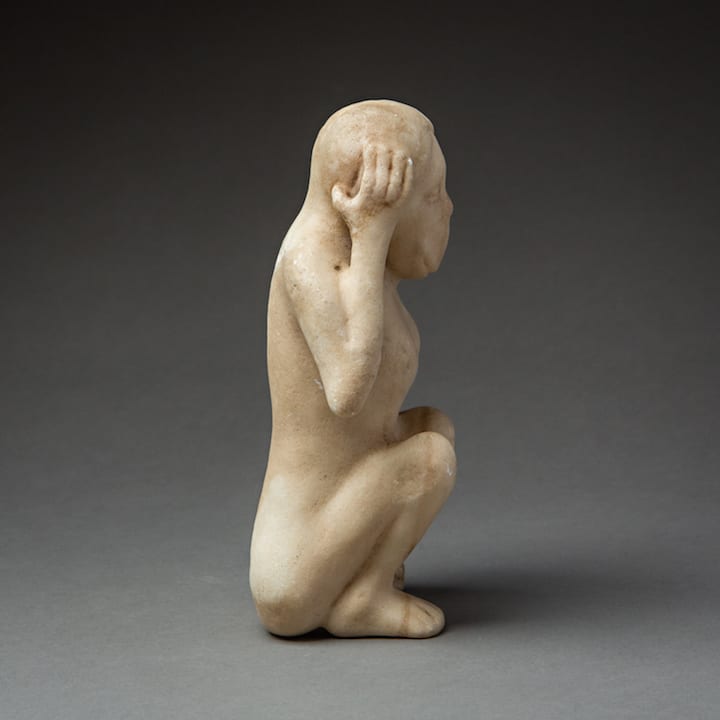Elamite Crouching monkey, 2100 BCE - 1500 BCE
Marble
19 x 12 cm
7 1/2 x 4 3/4 in
7 1/2 x 4 3/4 in
LM.61
Further images
Depicted in a human attitude, this intriguing sculpture is of a crouching monkey holding both hands up to cover its ears. Ancient Elam honoured the sacred monkey totem. Ancient Elam...
Depicted in a human attitude, this intriguing sculpture is of a crouching monkey holding both hands up to cover its ears. Ancient Elam honoured the sacred monkey totem. Ancient Elam made up mostly of city-states and bordering Mesopotamia, reveals many animals mimicking human characteristics on clay and stone vessels. Although not native to Mesopotamia, monkeys and baboons were known at court and given as gifts and tribute. Ancient texts disclose that monkey bone and hair were used to ward off or cure disease.
Elam was an ancient Pre-Iranian civilization centred in the far west and south-west of what is now modern-day Iran, stretching from the lowlands of Khuzestan and Ilam Province as well as a small part of southern Iraq. Elamite states were among the leading political forces of the Ancient Near East. In classical literature, Elam was also known as Susiana, which is a name derived from its capital, Susa. Elam was part of the early urbanization during the Chalcolithic period (Copper Age). The emergence of written records from around 3000 BC also parallels Sumerian history, where slightly earlier records have been found. Its culture played a crucial role during the Persian Achaemenid dynasty that succeeded Elam, when the Elamite language remained among those in official use. In accordance with geographical and archaeological matches, some historians argue that the Elamites comprise a large portion of the ancestors of the modern-day Lurs, whose language, Luri, split from Middle Persian.
Elam was an ancient Pre-Iranian civilization centred in the far west and south-west of what is now modern-day Iran, stretching from the lowlands of Khuzestan and Ilam Province as well as a small part of southern Iraq. Elamite states were among the leading political forces of the Ancient Near East. In classical literature, Elam was also known as Susiana, which is a name derived from its capital, Susa. Elam was part of the early urbanization during the Chalcolithic period (Copper Age). The emergence of written records from around 3000 BC also parallels Sumerian history, where slightly earlier records have been found. Its culture played a crucial role during the Persian Achaemenid dynasty that succeeded Elam, when the Elamite language remained among those in official use. In accordance with geographical and archaeological matches, some historians argue that the Elamites comprise a large portion of the ancestors of the modern-day Lurs, whose language, Luri, split from Middle Persian.









